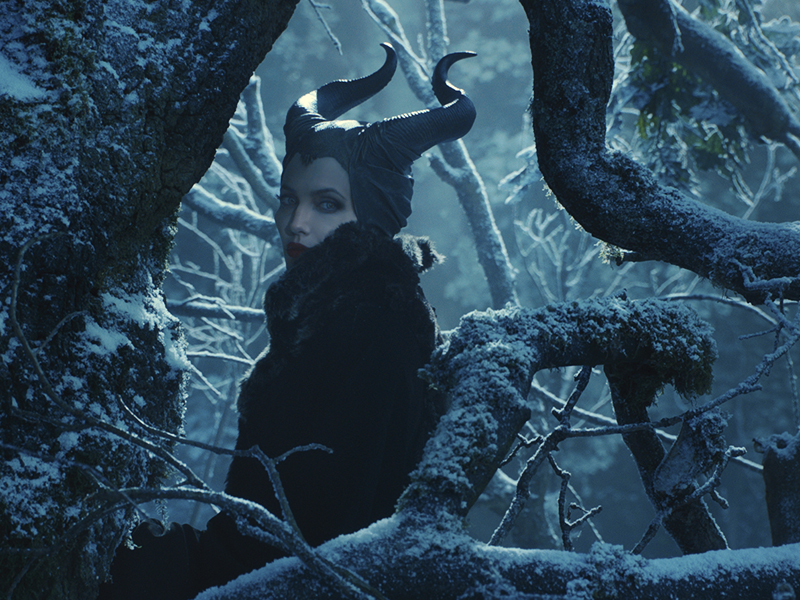
Hollywood has been on a kick lately with films like “Jack the Giant Slayer” and “Snow White and the Huntsman” — and television as well with “Once Upon a Time” — trying to breathe new life into, and cash in on, fables that were dominated decades ago by Disney. Not one to be left out of a trend however, Walt Disney Studios has released “Maleficent” from director Robert Stromberg, who attempts to give audiences the “real story” of Maleficent’s relationship with Sleeping Beauty.
“Maleficent” focuses on the eponymous fairy from the Disney film “Sleeping Beauty,” attempting to recast the villain as an antihero bent on righting the injustice caused by the folly of man. From the start, Maleficent (Angelina Jolie) is revealed to have been an honorable, winged fairy-protector of the Moors, a land where magic thrives. When tricked and robbed of her wings by King Stefan (Sharlto Copley), she decides to take vengeance on his daughter Aurora (Elle Fanning). Following the basic set-up of the original “Sleeping Beauty,” the king entrusts his daughter to the three fairies, renamed Knotgrass, Flittle and Thistletwit (Imelda Staunton, Lesley Manville and Juno Temple respectively) to keep her safe from the curse that is set to occur on her sixteenth birthday. After this point the film deviates, retelling the original story in a way that Maleficent becomes the character the audience is intended to sympathize with.
It’s unfortunate that the first problem the movie encounters comes at the expense of its potentially interesting plot. While it’s fine to rewrite a character like Maleficent to be the protagonist of her own film, the way this particular story goes about it is to kneecap the rest of the plot, making her into what is commonly called a “Mary Sue” (a character so perfect to the point of annoyance). As opposed to the original tale of a fairy so powerful that she became capricious and cursed a baby to die because she didn’t receive an invitation to a party, this version of the character is a fallen hero, driven to vengeful scorn by the acts of everyone around her.
Think about the original “Sleeping Beauty” for a moment. Maleficent is probably what you remember best: a fairy who is crazy and powerful, has the coolest villain design ever and teleports in green explosions of fire that make Michael Bay feel tingly all over before finally turning into an awesome black dragon! The only times the movie was even worth watching was when she was on screen. With the new changes to her character however, Maleficent loses all of the wicked edginess that made her so unbelievably memorable in a movie so poorly received that it was Disney’s first loss in the fiscal year.
Secondary characters aren’t exempt from screenwriter Linda Woolverton’s poor writing either. The most poignant victims of this lack of imagination are King Stefan — Aurora’s father — and the three fairies to whom Aurora is entrusted. The King in this film is no longer the honorable and loving father who sacrificed a life with his daughter for her benefit, but now a man who becomes so consumed by ambition that he poisons everybody around him and eventually falls into a spiral of self-destructive suspicion. Though this is interesting in theory, the execution fails to live up to its potential, and the character comes off as a villain so cartoony he belongs in the original film. The fairies are changed in a similar manner. No longer the loveably inept surrogate mothers with the best intentions and hearts of gold, now they are parents so poor that it’s surprising there wasn’t a plot point in the film where Child Protective Services tried to take the princess away.
The computer effects in the film were also quite hit and miss. Sometimes, creatures of the Moors would look to have been crafted with painstaking effort, only for the film to cut to a green-screened shot of Maleficent flying, so poorly rendered that it’s easy to imagine the fan blowing her hair just off-screen. Even so, some of the computer-generated creatures of the film fail to compare to the others, and leaves one to wonder if this movie wouldn’t have been better served with practical effects.
In spite of these issues, the film has its high points. By far, the single best actor in the film is Angelina Jolie as Maleficent, acting out subtle moments of quiet rage to a tee and overacting just enough that she captures the bombast of the original villain we all know and love. The makeup and wardrobe she is given throughout the film are also splendid, and when taken all together, she looks and acts just as well as even the staunchest critic could have hoped for.
“Maleficent” isn’t exactly a bad movie, but fails when compared to its source material, and it’s unfortunate that a film attempting to parody the old-school plot conventions of traditional Disney came so close after “Frozen,” which did it far better. Angelina Jolie as Maleficent is the best reason to see this movie, but if she doesn’t personally interest you, this is a movie better off avoided in favor of the original film.
Rating: 2 stars








